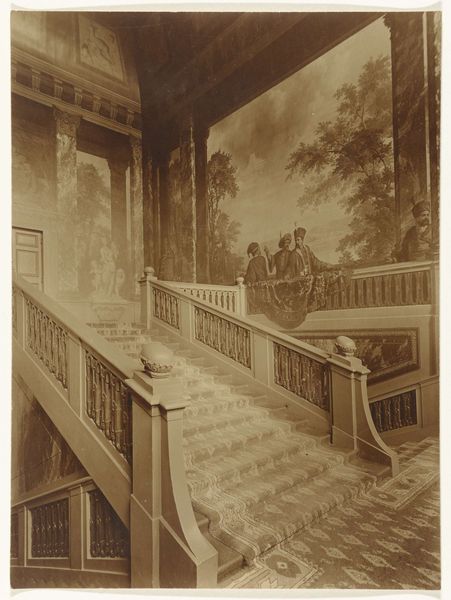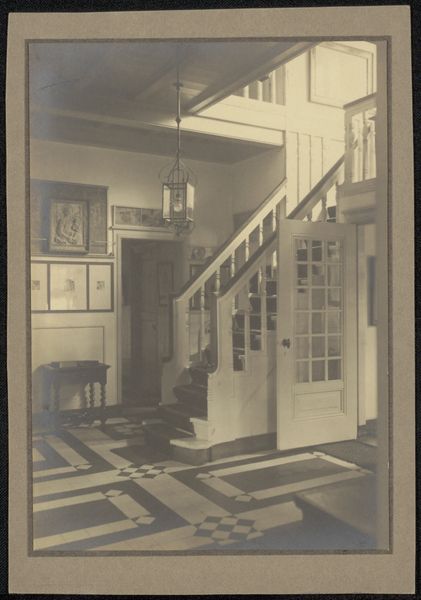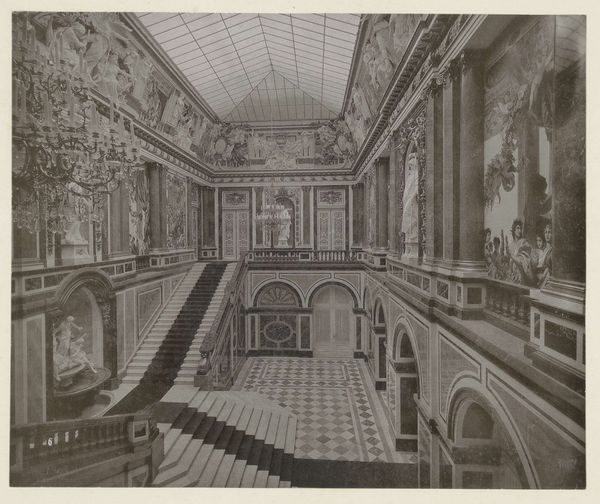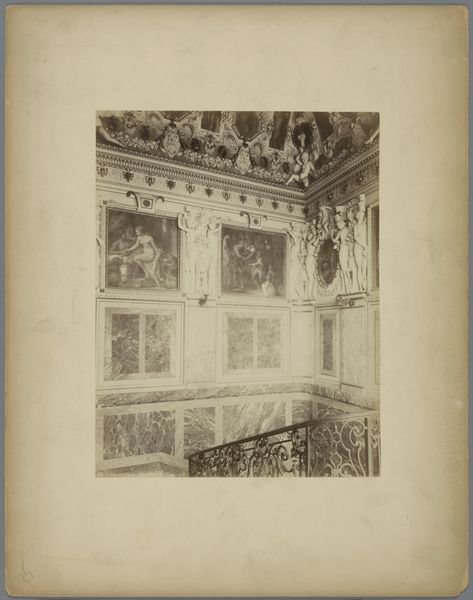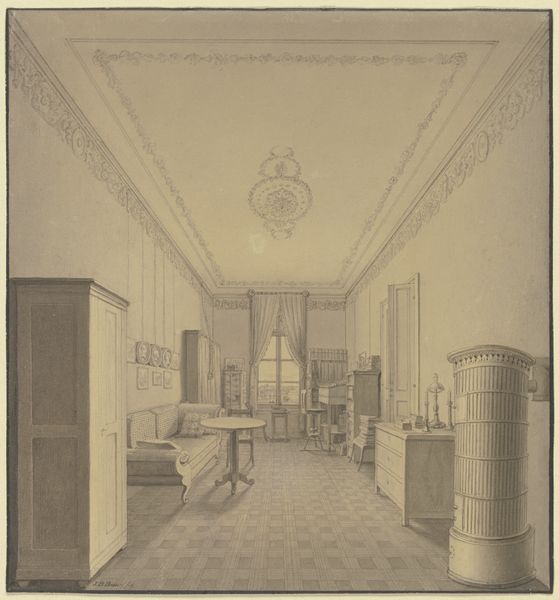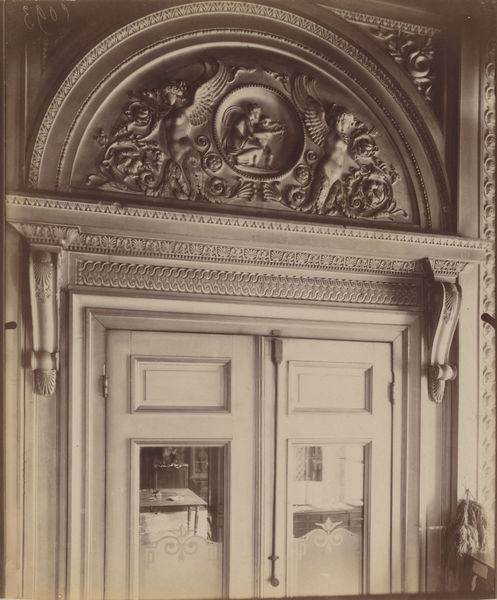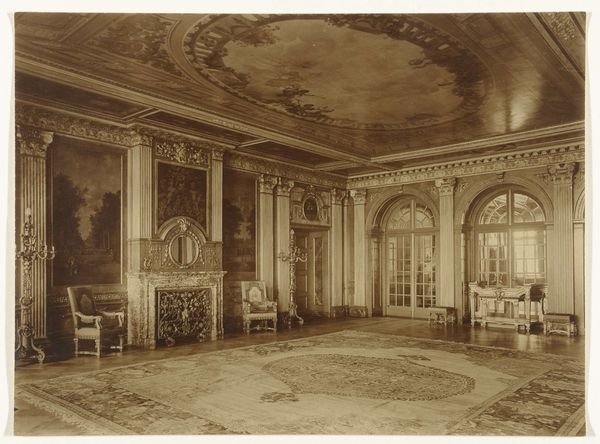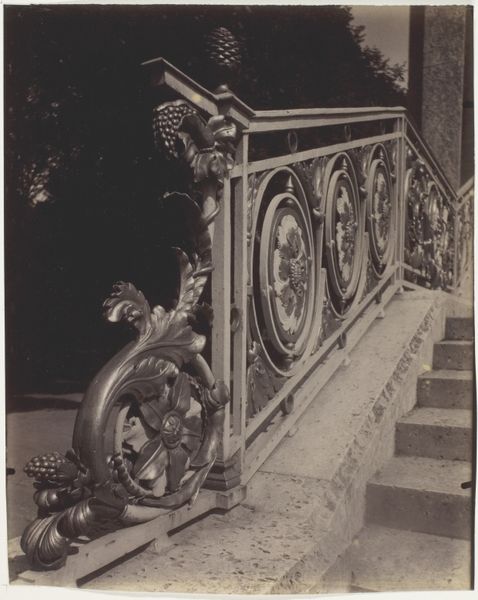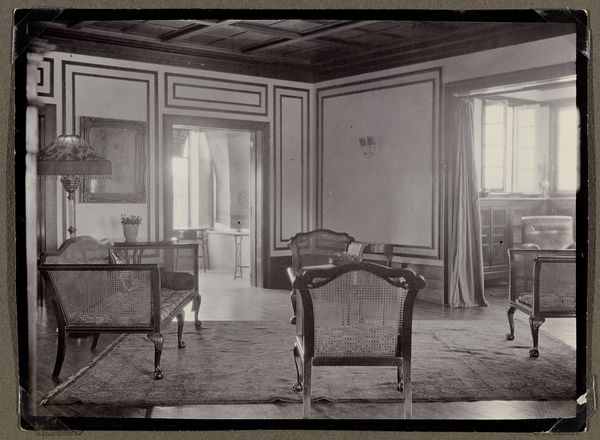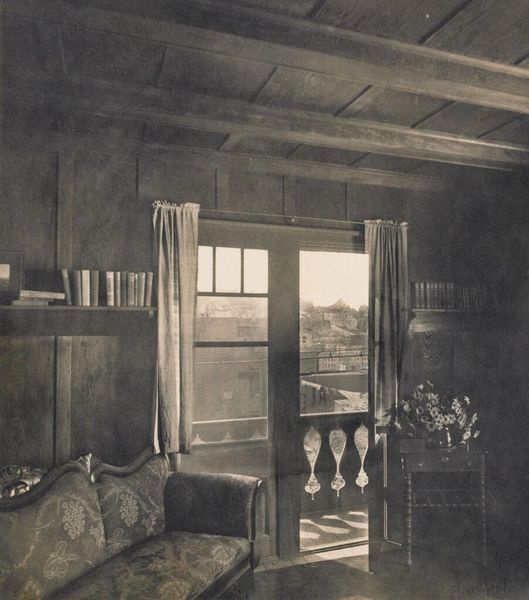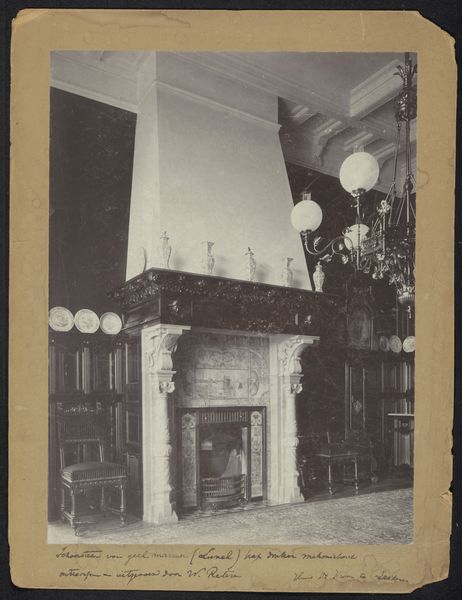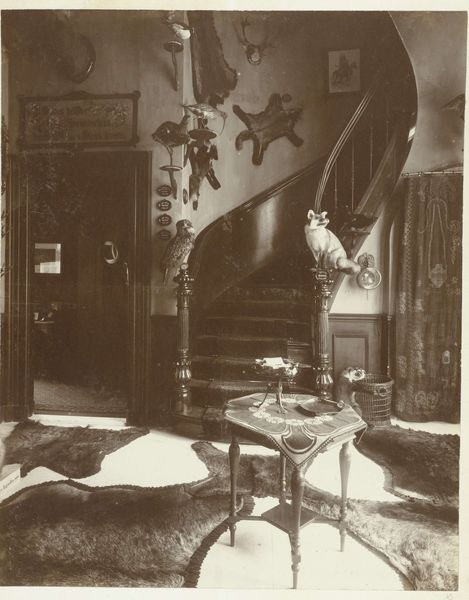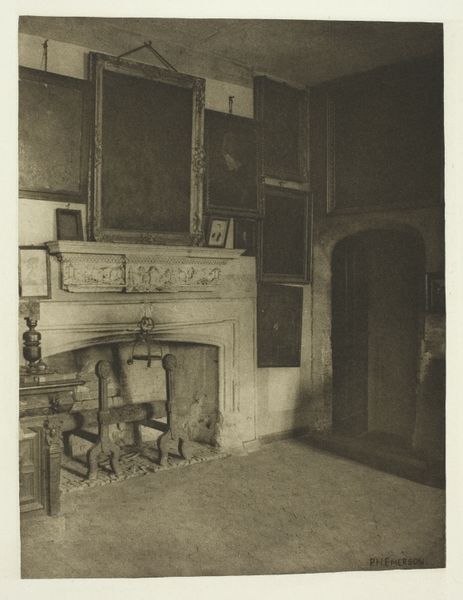
Gezicht in het trappenhuis van Paleis Het Loo in Apeldoorn 1900 - 1930
0:00
0:00
photography
#
portrait
#
landscape
#
photography
Dimensions: height 228 mm, width 167 mm
Copyright: Rijks Museum: Open Domain
Editor: This photograph by Richard Tepe, taken sometime between 1900 and 1930, is titled "View of the Staircase in Het Loo Palace, Apeldoorn." The sepia tone gives it such a feeling of distance, almost like looking at a memory. The figures in the mural are captivating, but detached. What symbols jump out at you? Curator: The figures are interesting, aren't they? Encoded in their depiction are symbols of power, tradition, and perhaps even a longing for a romanticized past. Their placement within a *painted* landscape suggests an awareness of constructed identity and a carefully curated image of authority. How do *you* read the contrast between the painted figures and the architectural details? Editor: I hadn't really considered it that way. I saw the painted scene simply as decor. Now that you mention it, the painted figures contrast with the marble statue along the stairwell; one alive, one petrified. The painting almost seems to breathe while the staircase remains stoic. Curator: Precisely. Tepe’s image freezes that contrast in time. Consider the cultural memory embedded in the architectural details. Columns and balustrades—echoes of classical power—placed alongside these figures hinting at an equally performative identity. It speaks volumes about the period’s anxieties and aspirations, doesn't it? It reminds me of royal portraiture and costumery, creating fables of political might. What remains, in a photograph like this one, are the codes—now partially unreadable—of what it means to be a ruler. Editor: This makes me think about how photographs can unintentionally become time capsules. Tepe probably just wanted to document the Palace, but inadvertently revealed details about royal presentation. The symbolism transforms the work from a simple document into a complex historical narrative. Thanks for pointing that out! Curator: My pleasure. It's precisely in the layering of meaning, the accumulation of symbols, that art speaks most profoundly to us across time.
Comments
No comments
Be the first to comment and join the conversation on the ultimate creative platform.
